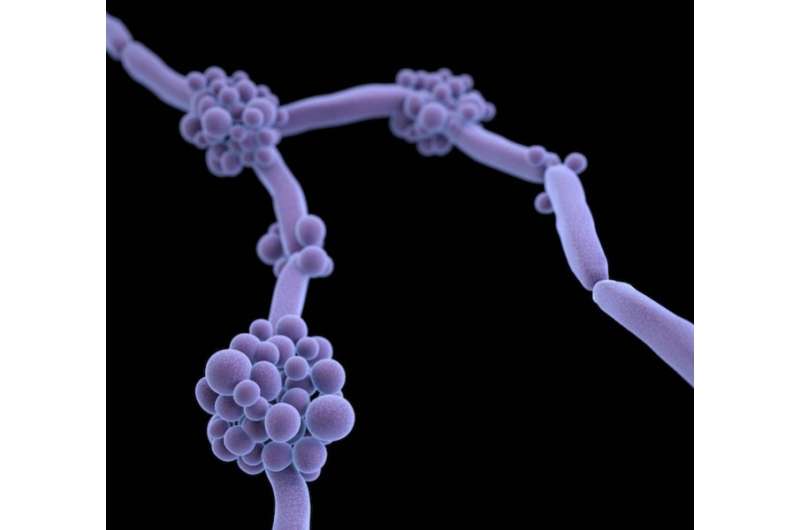Multidrug-resistant Candida auris discovered in a natural environment

For the first time, researchers have isolated the fungus Candida auris from a sandy beach and tidal swamp in a remote coastal wetland ecosystem. The discovery, reported this week in mBio, an open-access journal of the American Society for Microbiology, represents the first evidence that the pathogen thrives in a natural environment and is not limited to mammalian hosts. C. auris can cause infections resistant to major antifungal drugs, and since its identification in clinical patients 10 years ago scientists have sought to understand its origins.
A commentary accompanying the study, published concurrently in the journal, hailed the work as a "landmark discovery."
Medical mycologist Anuradha Chowdhary, Ph.D, at the University of Delhi, in India, led the new study. She and her colleagues analyzed 48 samples of soil and water collected from 8 sites including rocky shores, sandy beaches, tidal marshes, and mangrove swamps around the Andaman Islands, an isolated archipelago with a tropical climate in the Bay of Bengal. They isolated C. auris in the samples from two sites, a bay tidal salt marsh wetland and a beach.
In samples from the salt marsh, which was rich in seagrass and low in human activity, the researchers found 2 isolates, one of which proved to be multidrug susceptible when tested against antifungals. In samples from the beach, which was high in human activity, the team identified 22 isolates, all of which were multidrug resistant. Whole genome sequencing of the isolates revealed that they were closely related to pathogenic strains found in Southeast Asia.
"The isolates-found in the area where there was human activity were more related to strains we see in the clinical setting," Chowdhary said. Future studies, she said, may be able to explain that connection. "It might be coming from plants, or might be shed from human skin, which we know C. auris can colonize. We need to explore more environmental niches for the pathogen."
Although cases of C. auris trace to the mid-1990s, the fungus wasn't named until 2009. The new work also provides evidence for a hypothesis recently introduced by the microbiologists who authored the new commentary, including Arturo Casadevall, Ph.D, of the Johns Hopkins Bloomberg School of Public Health in Baltimore; Dimitrios Kontoyiannis, Ph.D, of the The University of Texas MD Anderson Cancer Center in Houston; and Vincent Robert, Ph.D, Westerdijk Fungal Biodiversity Institute, in Utrecht, Netherlands.
The trio proposed that C. auris, which is tolerant to a range of temperatures and salinity, is native to wetlands, and its emergence as a pathogen in humans has resulted from global warming effects on those environments. Chowdhary, who has been studying C. auris for nearly a decade, said that hypothesis inspired her to explore ecological niches where the fungus might live.
"This study takes the first step in toward understanding how pathogen survives in the wetland," Chowdhary said, "but this is just one niche." Future studies, she said, could reveal more about how the fungus thrives in the wild—and better explain why it's such a menace to humans.
Journal information: mBio
Provided by American Society for Microbiology

















